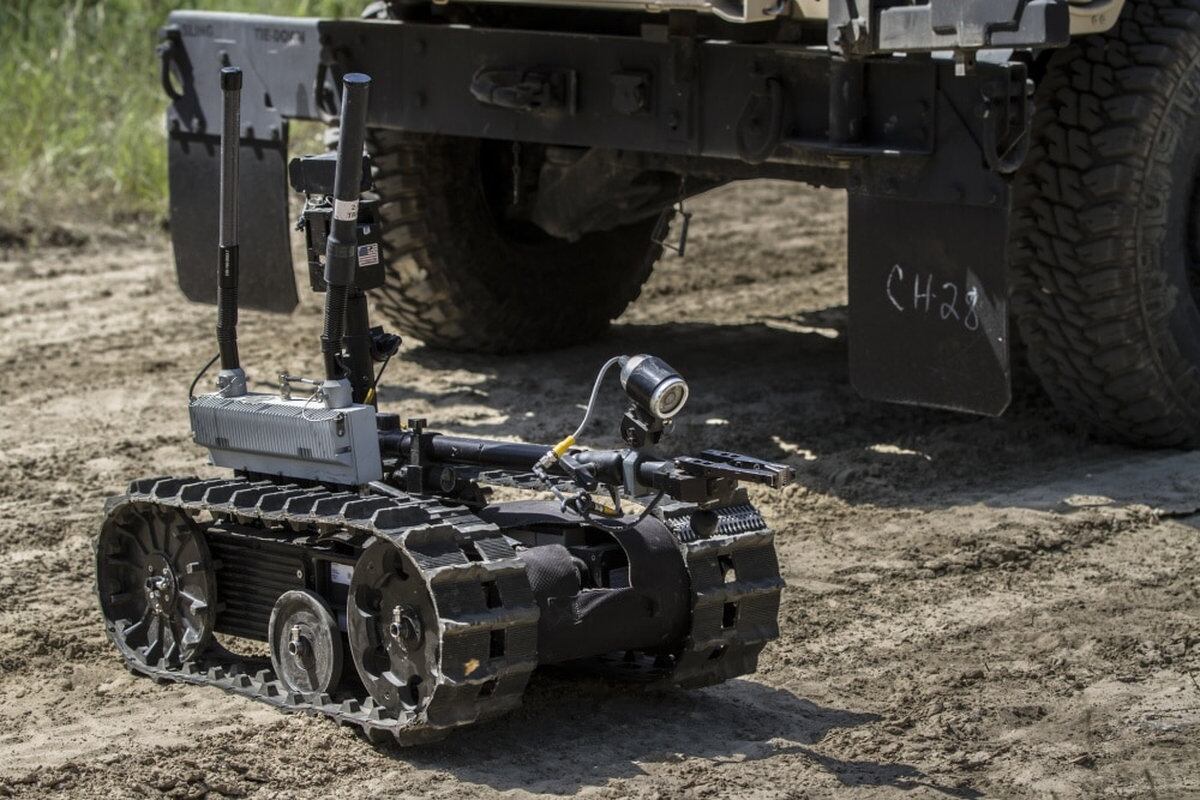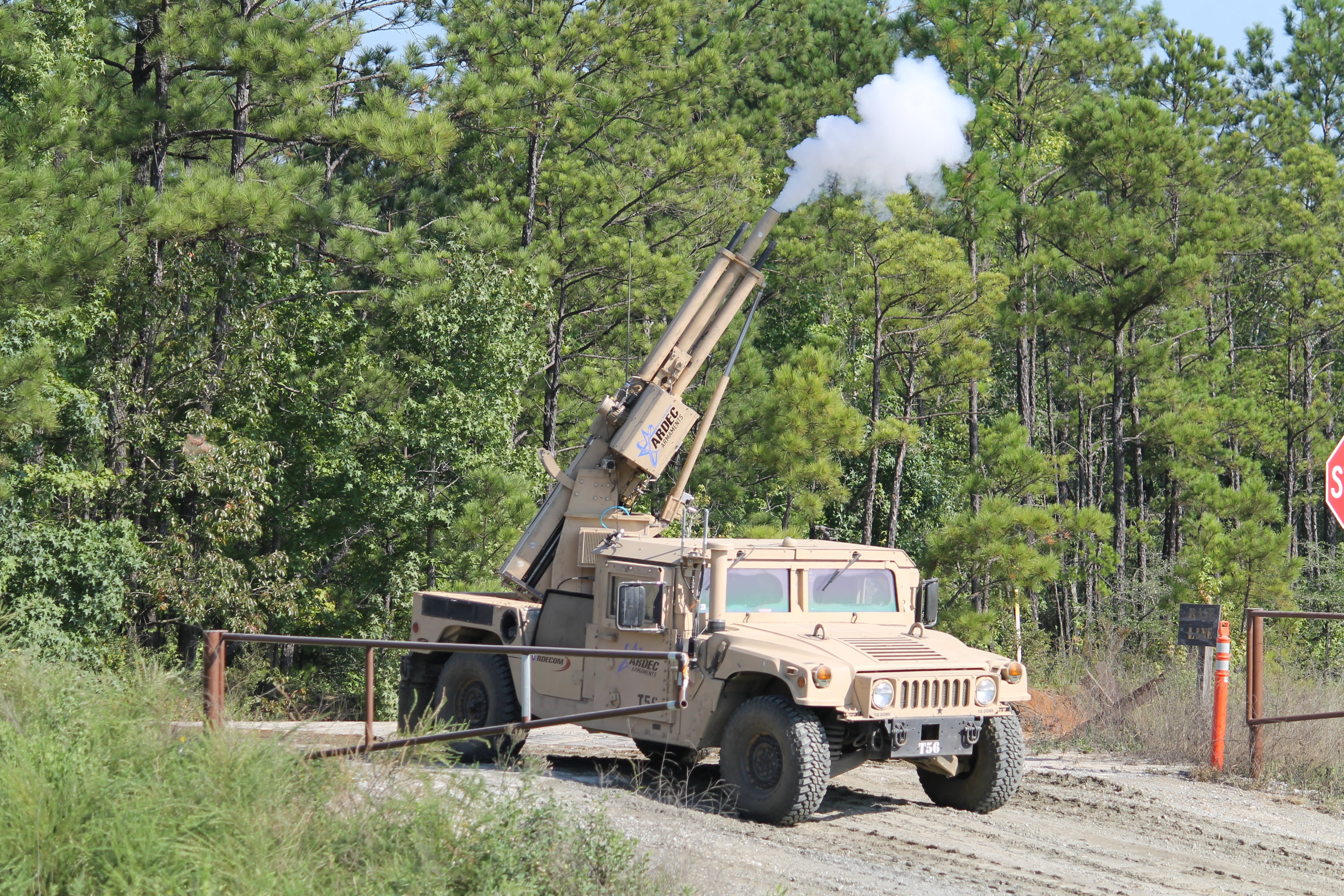PARIS, France — Ideas for how robots and vehicles may team on the battlefield have long been abundant, but honing in on a real strategy to make manned-unmanned teaming work operationally has proved difficult.
But defense industry around the world seems to be coming up with clearer concepts on how to take an endless proliferation of robotic technology and match capabilities with manned vehicles to create workable operational solutions.
On a recent trip to Eurosatory, one of Europe’s largest land warfare conferences, Don Sando, the deputy to the commanding general for combat development at the U.S. Army’s Maneuver Center of Excellence, said he’s not seeing much unique technology when it comes to unmanned capabilities around the world. Eurosatory, for example, featured an abundance of armed ground robots.
But “what I have seen corroborates our thinking that ground robotics systems, air robotics systems and the integration of both with manned systems is proliferating,” Sando told a small group of reporters at the show June 13.
RELATED

“I was here four years ago, and without taking a head count I am convinced that there are a lot more nations and companies displaying and talking about ground and air robotics systems and their teaming than there was four years ago,” he said. “We are not wrong in our thinking that robotic systems are important. They are here today. Everybody is thinking about them, they are available to all kinds of people, good and bad, and we are right to put our energy toward it.”
Several of the recent land warfare conferences showed that industry was struggling to bring concepts to fruition.
Sando said comparatively to Eurosatory, he saw less coherent concepts coming together at the Association of the United States Army’s annual conference in October 2017 in Washington.
And James Tinsley, a defense analyst at Avascent, told Defense News last September at DSEI in London that the expo showed a striking lack of integration of unmanned aircraft systems into vehicle concepts.
At DSEI, Finnish defense company Patria was the only one to display a concept integrating a drone with a vehicle — mounting the hand-launched Black Hornet micro-UAV from FLIR atop a little stick on the roof of the back end of its armored modular vehicle.
“This may reflect the lack of consensus around which crew member will operate the platform and sensor, who will buy and maintain the system, how launch/recovery/reuse can be integrated into the vehicle architectures, and other things to be worked out,” Tinsley said. “But it seems like there could be some additional low-cost, [commercial/modifiable off-the-shelf] solutions and integration opportunities to shape market demand, which vehicle and system contractors are not pursuing.”
Those solutions have begun to take shape at recent defense shows like Eurosatory. The increase in more fleshed out concepts there could stem from the promising advances the U.S. Army and militaries abroad have made in trying to solidify concepts that align with its robotics and autonomous systems strategy, which shows armed forces might be more willing to buy and field concepts.
One concept on the expo floor was eerily similar to Patria’s concept at DSEI. BAE Systems showcased a Black Hornet on its CV90 armored combat vehicle.
But others took it a step further by integrating both unmanned aerial and ground vehicles with manned systems.
French company Nexter unveiled a concept version of its Titus armored vehicle adapted to carry augmented mission systems that included a tethered UAV, unmanned ground vehicles and a remote controlled 20mm cannon.
The UAV would be used for surveillance and artillery targeting and can fly at a height of up to 50 meters. Another UAV concept was a standalone drone that could be launched from the vehicle’s roof for reconnaissance missions.
And Nexter had designed the hull to have an outside compartment to deploy a small UGV to detect improvised explosive devices and chemical, biological and radiation weapons.
The 20mm cannon, the UGV and UAV can be controlled inside or outside the vehicle with a smart pad.
In August, the U.S. Army took aggressive steps with a major demonstration at Fort Benning, Georgia, in August that evaluated the concept of a robotic wingman within the maneuver force and how to incorporate robotic capability within a tank formation that included both ground and aerial unmanned systems.
RELATED

Recently, the U.S. Army in Europe demonstrated a complex breach concept using mostly robotic systems at the Joint Warfighting Assessment in Germany this spring that proved to be very operationally effective, according to Sando.
He added that the ultimate goal is for every formation to have air and ground unmanned systems to help forces from individual-dismount solutions like throw-bots and soldier-borne sensors like the Black Hornet, to capabilities installed at the squad, platoon, and company levels and above.
What that really looks like and what systems are chosen for various capabilities at various levels will take more time to determine, Sando said.
Jen Judson is an award-winning journalist covering land warfare for Defense News. She has also worked for Politico and Inside Defense. She holds a Master of Science degree in journalism from Boston University and a Bachelor of Arts degree from Kenyon College.







